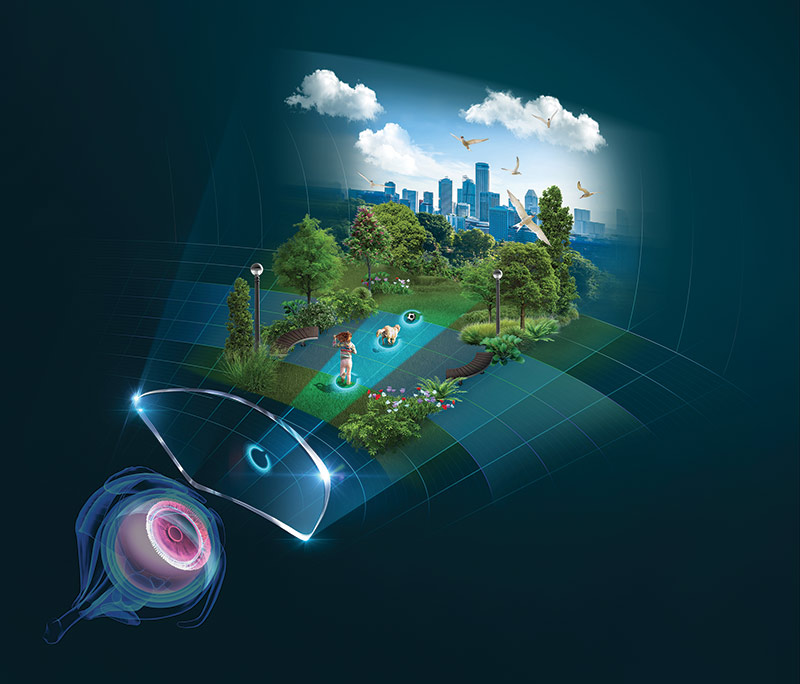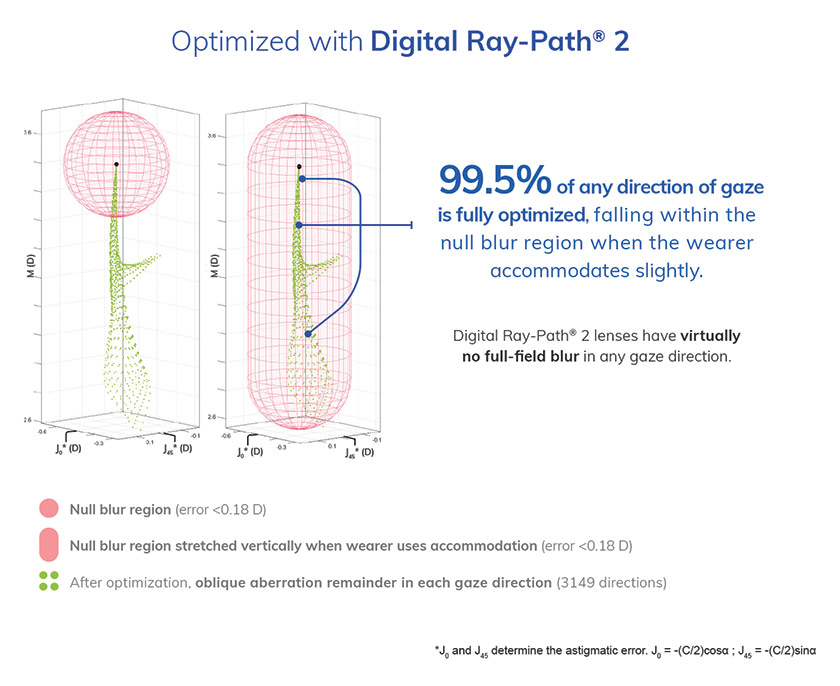Sponsored by IOT
By Deborah Kotob, ABOM
In Part 11, we learned about IOT’s foundational technology, Digital Ray-Path®. This technology minimizes oblique aberrations in customized free-form lenses. We learned that “The value of the merit function is given by a weighted sum of the optical aberrations of the lens system. To achieve the best lens performance optimization of the optical system means finding the values of the free parameters that make the value of the merit function minimal.” (Dr. Jose Alonso et al)
In IOT Free-Form Insights Part 12, we will learn how Digital Ray-Path® 2 Technology builds on Digital Ray-Path by improving the merit functions for smoother distribution of residual aberrations

FIG. 1 Our eyes change the shape of our crystalline lenses to make small adjustments in refractive power so that we can focus at varying distances through the same point in the lens. These small adjustments are called accommodation. For seeing objects further away, accommodation relaxes but to see up close accommodation increases. Digital Ray-Path 2 harnesses this natural focusing power. In lenses optimized with Digital Ray-Path 2, each direction of gaze is associated with a range of focal distances, a volume of space, as opposed to a specific point within the object space. These small adjustments are made within a threshold that does not affect the visual comfort of the wearer.
Digital Ray-Path 2 is the culmination of research by IOT to find alternatives to overcome the limitations imposed by the geometry of the free-form surfaces and thus achieve lenses with even better compensation of the oblique errors. The key ingredients that allowed them to surpass the performance of Digital Ray-Path Technology are not in the geometry of the free-form surfaces, but the smart use of the wearer’s eyes’ accommodative capacity along with a more balanced optimization process where the accommodative space is considered.
Digital Ray-Path 2, like its predecessor, is an optimization technology for ophthalmic lenses based on customization parameters. Digital Ray-Path 2 incorporates new characteristics that go beyond optimizing points on the lens for a single distance. Digital Ray-Path 2 incorporates the eyes’ accommodation capacity as a physiological merit function into the optimization algorithm, partially compensating for the mean power error and further reducing oblique power error. While optical engineers have long been aware of these physiological merit functions, practical implementation was associated with mathematical difficulties until Digital Ray-Path 2. IOT implements this concept by incorporating accommodation in the dioptric power space and using blur strength or dioptric error with weight functions to give continuity to the merit function. Digital Ray-Path 2 corrects for oblique aberrations within a range of focal distances in accommodative object space for each direction of gaze. The minimi¬zation of oblique aberrations is balanced throughout the accommodative object space.

FIG. 2 Single vision lens, [+3.00 -1.00 × 90°], 6 D base curve and 1.5 index
The scatter plot in Fig. 2 illustrates the peripheral blur associated with 3,149 random directions of gaze. Here we see how Digital Ray-Path 2 expands beyond lens surface geometry to utilize the ability of the wearer’s own eyes to make small focal adjustments with accommodation. The image on the left shows a single vision lens optimized with Digital Ray-Path 2. The region of null blur is, spherocylinder error of less than .18 diopters, is shown as a round globe. But as we know, small modifications in wearer accommodation allow their eyes to adjust to a range of focal distances, the edges of which are the top and bottom of the capsule shape on the right. When we take accommodation into account and optimize the lens, full-field blur is virtually eliminated with Digital Ray-Path 2 lens technology.
I hope that IOT Free-Form Insights Part 10 through 12 have given you an appreciation of the science and technology, and years of research and development it takes to advance lens technology.













